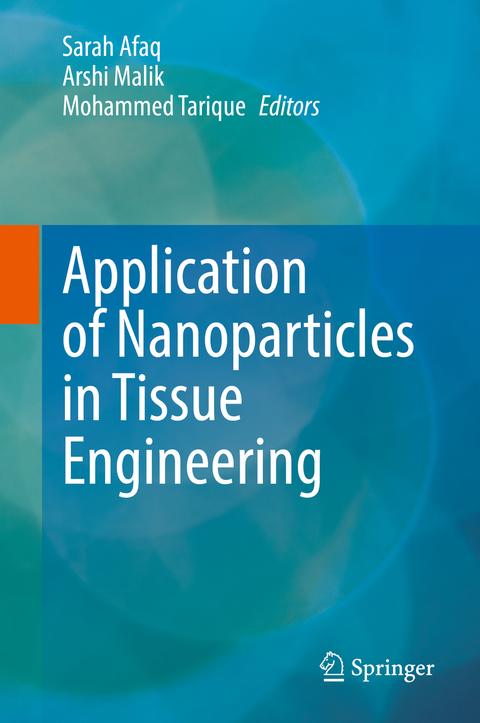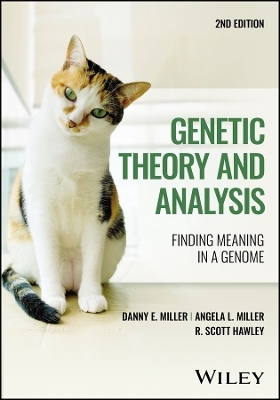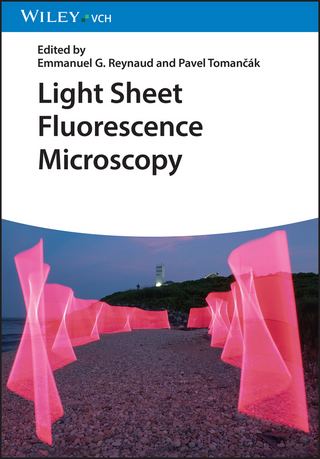
Application of Nanoparticles in Tissue Engineering
Springer Verlag, Singapore
978-981-16-6197-6 (ISBN)
This book discusses advancements in the applications of nanoparticles in tissue engineering. It examines the applications of nanobiomaterials in hard tissue regeneration, fabrication, and characterization. The book also analyzes the implication of three-dimensional and four-dimensional fabrication techniques for the production of the scaffold in tissue engineering and their advantages over conventional scaffold production techniques. Further, it presents smart materials used in making 4-D scaffolds that imitate the dynamic response of tissue against natural stimuli and adapt to the microenvironment by changing their conformation or other properties. It also summarizes the growing field of biomolecular detection and biosensors in tissue engineering and the increasing prominence of nanoparticles in the biosensors. Further, it provides the future outlook and associated challenges of the application of nanomaterials in tissue engineering.
Dr. Sarah Afaq is an Assistant professor at the Department of Biochemistry, College of Medicine, King Khalid University. Previously, she was an Honorary Associate at the Department of Surgery, University of Wisconsin, Madison, USA, and an Assistant Professor at the Department of Biochemistry, Roorkee College of Pharmacy, Roorkee, India. She has extensive experience in human cancer and embryonic stem cell lines, blood screening for anti-DNA antibodies in Systemic Lupus Erythematosus patients, and nanotechnology-based techniques to design and deliver drug molecules. She is a member of numerous scientific societies, including the Clinical Immunology Society, USA, and the International Society for Stem Cell Research, USA. To date, she has published more than 30 research articles in peer-reviewed international journals. Dr. Arshi Malik is an Assistant Professor at the Department of Biochemistry, College of Medicine, King Khalid University. Previously, he worked as aResearch Associate at the Wellman Laboratories of Photomedicine and Photobiology, Massachusetts General Hospital, Harvard Medical School, and Assistant Researcher at the University of Wisconsin. His main research interest is in chemoprevention and chemotherapy using various natural agents. He has extensive experience in human tissue cultures, orthotopic/ecotopic implantations of tumors in rodents, tail vein injections, and surgery on small animals. He is a member of various scientific societies, including the American Association of Cancer Research, USA, and the Society of Investigative Dermatology, USA. To date, he has published more than 30 research articles in peer-reviewed international journals. Dr. Mohammed Tarique is a Dr. D.S. Kothari Postdoctoral Fellow at the Center for Interdisciplinary Research in Basic Sciences (CIRBSc), Jamia Millia Islamia, India. Holding a Ph. D. in Plasmodium Biology from the International Centre for Genetic Engineering andBiotechnology (ICGEB), New Delhi, India, his research focuses on understanding the biology of Plasmodium in the development of novel drugs. He has published more than 20 research articles in leading peer-reviewed international journals. Currently serves on the editorial boards of numerous journals, including the American Journal of BioScience, Austin Biochemistry, International Research Journal of Engineering and Technology, Journal of Molecular Biology and Molecular Imaging, SAR Journal of Pathology and Microbiology, Open Access Journal of Microbiology & Biotechnology and Acta Scientific Microbiology Journal.
1 Nanoparticles for tissue engineering: Type, properties, and characterization.- 2 Nanoparticles for hard tissue engineering.- 3 Application of nanoparticles in soft tissue engineering.- 4 3D and 4D nanoprinting for tissue regeneration.- 5 Strategies to improve delivery of bioactive agents.- 6 Application of nanoparticles in biomolecular detection.- 7 Challenges and future prospect of nanoparticles in tissue engineering.
| Erscheinungsdatum | 29.10.2021 |
|---|---|
| Zusatzinfo | 1 Illustrations, black and white; V, 133 p. 1 illus. |
| Verlagsort | Singapore |
| Sprache | englisch |
| Maße | 155 x 235 mm |
| Themenwelt | Medizin / Pharmazie ► Medizinische Fachgebiete ► Biomedizin |
| Medizin / Pharmazie ► Physiotherapie / Ergotherapie ► Orthopädie | |
| Naturwissenschaften ► Biologie ► Genetik / Molekularbiologie | |
| Naturwissenschaften ► Biologie ► Mikrobiologie / Immunologie | |
| Naturwissenschaften ► Biologie ► Zellbiologie | |
| Naturwissenschaften ► Chemie | |
| Technik ► Maschinenbau | |
| Technik ► Medizintechnik | |
| Technik ► Umwelttechnik / Biotechnologie | |
| Schlagworte | biosensors • hard tissues • Nanoprinting • nanotechnology • Tissue engineering |
| ISBN-10 | 981-16-6197-9 / 9811661979 |
| ISBN-13 | 978-981-16-6197-6 / 9789811661976 |
| Zustand | Neuware |
| Haben Sie eine Frage zum Produkt? |
aus dem Bereich


